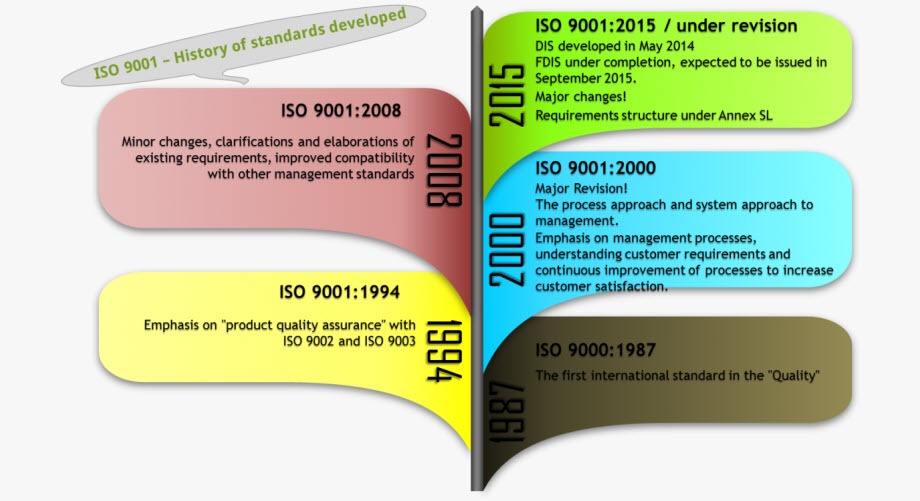EQMS Blog

ISO 9001 History And A Brief Overview Of The Standard
A Brief Introduction to ISO 9001 History
The quality standard ISO 9001 has a long history starting from the 1980s to up till now. It has passed through various stages of its evolution and is now a well-established quality standard that is internationally recognized and it serves as a standard for organisations to benchmark their Quality Management System (QMS) against. It has provided enormous benefits to organisations as well as their consumers. It considers the consumer requirement in all aspects of the business and the organisations benefits from improving their quality as well.
The First Milestone in ISO 9001 History
A technical committee was established in 1979 which created quality standards. ISO 9000 known as the quality assurance standard was first released in 1987. It specifies the requirements of a Quality Management System (QMS). These standards were based on the British standard BS 5750. It was started to create a common standard for organisations to work to worldwide. At the same time, it also provided the option to get certified against the standard which provided huge advantages when dealing with suppliers worldwide. As the standard is the same in every country, an ISO 9001 certification showed a company’s QMS is compliant with the ISO 9001 standard.
Updated Versions
ISO stands for International Organisation for Standardization and it has members from 91 nations. ISO published the first version of the standard in 1987 and then they published an updated version of ISO 9001 in 1994. ISO updated the standard again in 2000, 2008 and to the current version in 2015. This version introduced a new concept of the standard and Quality Management Systems and replaces action with risk-based thinking.
ISO 9001 history up till now
ISO has two types of quality standards i.e. requirements and guidelines. These two make up the quality standard. If you want to get certified officially, the requirements are what your organization is certified against. If you are looking to get certified then it is the 9001 standard that is most relevant. However, on the other hand, if you want to get suggestions or recommendations only, guidelines are helpful.
At the end of 2014, there were more than 1.3 million ISO certificates in 190+ countries around the world which shows the popularity of the ISO standards. There are many organisations that are now getting registered with ISO and have it as a requirement for their suppliers as well to ensure consistent quality.
Historical uses of ISO 9001
ISO 9001 is useful for all types of organisations as it helps them to organize processes and to improve the efficiency of the processes on a continuous basis. ISO not only provides a certificate to an organization, but also help the organization improve their customer satisfaction and further development.
Purposes of ISO 9001
Meeting the standard ensures you have an efficient QMS. The purpose of the ISO standard is to define an efficient QMS which places the customers in focus and drive continual improvement. Some other benefits of ISO 9001:2015 are outlined below.
- It improves the business processes.
- Organize a quality management system (QMS).
- It reduces cost and improves quality in all aspects.
- Enhance customer satisfaction and loyalty.
If you are looking for support with the development and implementation of an ISO 9001 Quality Management System, then please contact us for a free consultation.

Request a free consultation
Contact us to discuss your needs and see how we can support to reach your goal.

Recent posts

In today's digital age, businesses are constantly exposed to various cyber threats. As a result, companies must adopt a proactive approach to cybersecurity to prevent data breaches, theft, and other...

Quality management systems are essential in ensuring that organisations can deliver quality products and services consistently. The International Organisation for Standardization (ISO) developed the ISO 9001 standard to help organisations...

ISO 14001 is a globally recognised standard for environmental management systems (EMS) that helps organisations manage their environmental impact and improve their sustainability performance. Obtaining this certification demonstrates a company's...
Just a Few of Our Clients
Request a Free Consultation
Contact us to discuss your needs and see how we can support to reach your goal.












